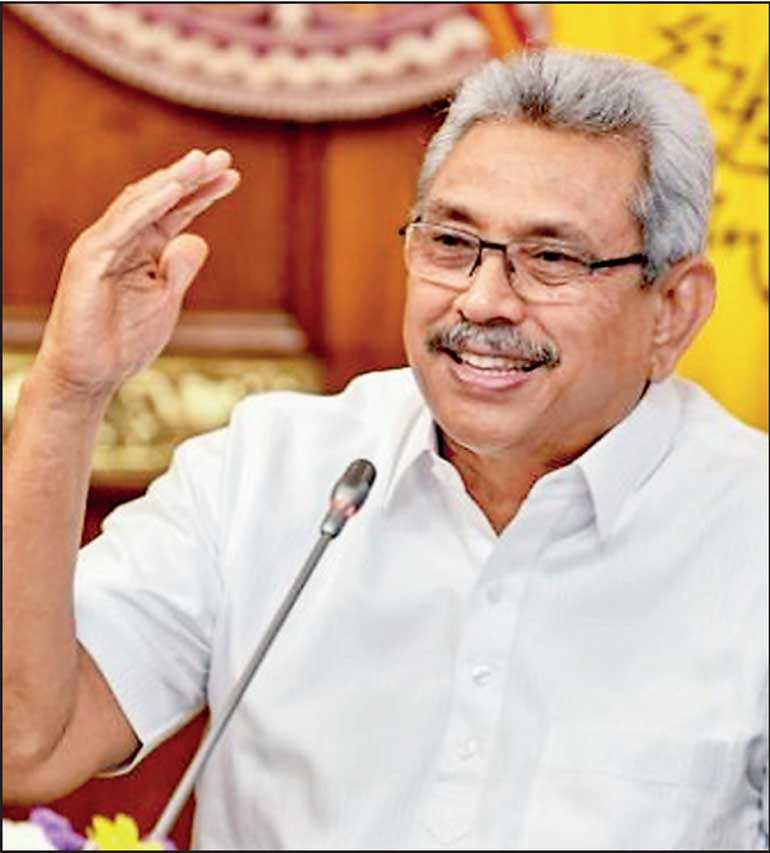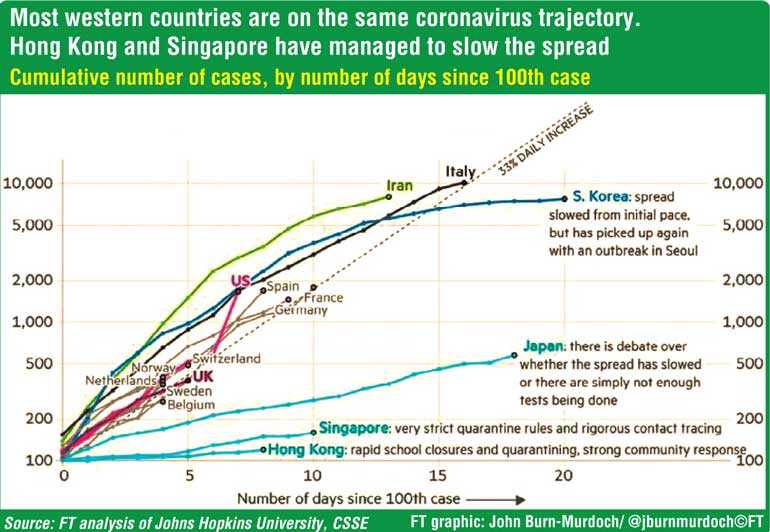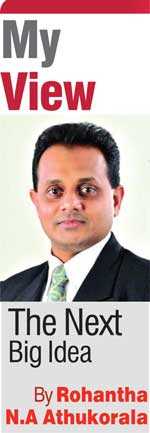Sunday Nov 09, 2025
Sunday Nov 09, 2025
Friday, 20 March 2020 00:00 - - {{hitsCtrl.values.hits}}



In my view Sri Lanka has never been as challenged, be it in war time with the LTTE, the Easter attack or the devastating tsunami, as what we are facing with COVID-19. 
The logic is that we are impacted on all revenue earning sectors – tourism, exports and foreign remittances. In the last week the currency has depreciated to 187/23 on the US Dollar and the stock market declined to 2009 levels.
As a country already lagging behind the region at a 2.6% GDP growth and household income declining by -7.4% in the Q4-2019, COVID-19 is sure a severe threat to the economy. A point to note is that this comes at a time when the Government is in the minority working on a shoestring ‘vote on account’ fund, which adds to the pressure.
By the way the Parliament has been dissolved and the Government is looking for a two-thirds majority at the elections planned for 25 April, putting Sri Lanka in a catch 22 situation.
Reality
– Sri Lanka
If we analyse the core segment impacted by COVID-19, they are the families that have a wage earner in Italy or in South Korea – the two hotspots globally. If we analyse their working profiles, the majority are blue collar workers and contribute to the ‘remittances business of Sri Lanka’.
The key geographic hotspots are emerging in Sri Lanka in Puttalam District and selected areas of Negombo where local curfew has been implemented. As at 18 March there were 2,287 quarantined and 221 suspected with 51 confirmed cases. Incidentally the first 50 cases reported in Sri Lanka came quicker than South Korea, Italy, US and India. Three patients have recovered after treatment with no deaths reported.
The challenge
There are many models being implemented across the world to flatten the curve on COVID-19, the most successful being Hong Kong and Singapore, the strategy being to identify and isolate. Some countries are practicing the ‘lockdown’ method – namely China, Italy and France. The US strategy of ‘social distancing’ is also an interesting model which the world is observing as a case in point.
However the most important KPI in a country should be the resources it has for testing. For instance South Korea had 3,600 test kits to a million ratio to streamline the identification process. This included a drive-in strategy for vehicle owners. In the United States it is an appalling 250 to a million, which is the issue highlighted by strategists given that President Trump had disbanded the key unit as soon as he took office.
We are not sure of this data in Sri Lanka except that initially only the Government hospitals offered this service free of charge and on Wednesday evening it was announced that even private sector hospitals could do the Corona COVID 19 test but the relevant Government entity must be informed.
The diffusion – COVID 19
The current behaviour is that if a country crosses the 100 mark on COVID- 19, the diffusion of cases to reach the 1,000 mark takes five to seven days as per behavioural studies done. This calculation can vary on the culture of the country and density of the population.
China took four days to cross the 1,000 mark after reaching 100, Italy six days, Iran five days, Spain seven days, South Korea six days, Germany and US eight days, which is why the medical fraternity was pressurising the Government to go for a lockdown so that we keep the numbers below 100. Especially given the ‘family-oriented’ culture that exists in Sri Lanka and the ageing population, the ramifications can be heavy.
However, the President was strongly of the view that location specific curfews and ‘identify and isolate’ is the strategy that will work in Sri Lanka. He went on to state that with this strategy, if implemented with the support of the general public, the COVID-19 curve can be flattened. A man who developed a new model to beat the most ruthless terrorist organisation in the world must be clear in his thinking to state that this strategy of segment, identify and isolate will work. As we speak now the targeted area is in the Puttalam District where this strategy is seen in action.
Pakistan – World is watching
Given the habit of the extended families living together and a typical family being large, the world is watching how Pakistan will pan out given that on 16 March the country crossed the 100 mark of infected cases.
Strategists recommend that unless drastic action is taken we will see the country hit 1,000 within the next five to seven days. Karachi closed schools almost three weeks back and has been on partial lockdown given the strong military leadership that runs the country. In South Asia, the Pakistan model can have an impact on how the rest of the countries strategise the next course of action.
At the SAARC satellite conference between the leaders of the countries, there was a pause when Sri Lanka announced that it would go ahead with the elections when the theme of the conference was ‘social distancing’ as a way forward to curtain the outbreak in the backdrop of WHO terming it a pandemic.
Social distancing
There are many models based on the concept of social distancing. If a country wants to reduce the diffusion process, then it will have to practice the key basic: ‘social distancing’. The logic is that R-naught on COVID-19 is three to four people. This means that one infected person will infect three to four people. The average family size being four in Sri Lanka validates this working. Hence the Sri Lanka number at 51 confirmed means that around 212 people falling into the suspecting category justifies this math.
However, this logic is blown away at unusual social behaviour like a big match where 3,000 congregated last week with extensive physical contact from what we saw on social media. It is very sad that the authorities allowed such an engagement to go on, given the task-oriented approach of the hierarchy. I guess in Sri Lanka the political economy is stronger than a disciplined work ethic approach.
Italy – Case in point
Given that Sri Lanka is at a decisive stage in the COVID-19 outbreak, it is important to understand the behaviour patterns of a country similar to Sri Lanka where a lockdown was voted down that resulted in the outbreak becoming uncontrollable.
On 15 February Italy had just three cases. By the 23rd, it had 157. By the 29th, there were 1,128 cases (which is just six days). By 7 March it had crossed 5,883 people (seven days of diffusion), by 10 March it reached 10,149 patients, just four days of diffusion). By 16 March the number had exceeded 27,980 cases, meaning in just six days of diffusion, this number was impacted. This is even after a lockdown scenario in Italy, which is what the GMOA was trying to advocate to the Sri Lankan Government.
A control point to note is that Sri Lanka has around 500 beds (facilities) to treat the critical cases of COVID-19 when the lungs get affected. Hence the overall number must be kept down so that the 2% critical will never exceed the 500 mark. This calculation was not done in Italy, hence the heavy casualties given the higher vulnerable population in that country.
The COVID-19 model – Italy
Let me deep dive into the model that was practiced in Italy.
Stage 1: All knew that the COVID-19 coronavirus existed and the first cases began to appear in a country. People termed it as ‘just a bad flu!’ and said things like ‘I’m not 75+yo so what could possibly happen to me?’ People said: ‘I am safe, everybody is overreacting. I’m going to live my life as usual.’
Stage 2: The number of cases began to pick up and moved up to around 50. There was a declaration of a ‘red zone’ and one or two small cities were quarantined. A few cases were found but later it was discovered that a lot of people were infected. I believe we in Sri Lanka are at this stage. In Italy there were some deaths reported subsequently, mainly of aged people with complications. Sri Lanka has not matured to this stage.
Stage 3: Cases rapidly picked up, crossing the 100 point mark with the number doubling. The quarantine geographies increased almost up to 25% of the country. The suspected crossed the 10,000 mark but most of the population of the remaining 75% of Italy continued to lead their own way of life. They still did not realise the seriousness of the situation. People were washing hands as a practice but not diligent to avoiding the spread of the germ.
Stage 4: The number of cases began to heavily increase. The public was told to close all restaurants, pubs and eating places. The announcement of a national health emergency came into effect. Hospitals were at capacity, entire units were cleared to make space for coronavirus patients. Reports emerged that there was a shortage of doctors and nurses.
Stage 5: This is where the country was termed a red zone and people were forced to discipline themselves, with times allocated to do shopping and so on. The lockdown came into force strictly and the entire country was declared under quarantine. The objective was clearly to delay the spread of the virus and people were not allowed to move unless for a valid reason. The majority of people were seen wearing a mask and gloves but still there were people who thought that they were invincible.
Stage 6: Businesses closed, bars and restaurants shut, as people stopped socialising. Shopping centres and all kinds of entertainment came to a grinding halt. People began to turn to God for safely. Everything except supermarkets and pharmacies ceased to operate. Violators were fined or imprisoned for one to 12 years of jail for homicide. This is where Italy has come to.
Conclusion
Whilst the above is the model seen in Italy, other models have been enforced in countries like Singapore and Hong Kong, while the President said the Sri Lankan strategy was different and ahead of the curve.
Let’s see if Sri Lanka can add to this body of knowledge with a new theory of managing and combating COVID-19.
This is why the WHO states that this situation is a real life test for governments around the world to evaluate their skill of governance, experience of the healthcare sector and richness in human capital. The next few months will be an interesting time globally.
(The writer is a CEO of an international Artificial Intelligence company for the South Asian region and an alumnus of Harvard University Executive Education and an A.P.J. Abdul Kalam award winner. The thoughts are strictly his personal views.)